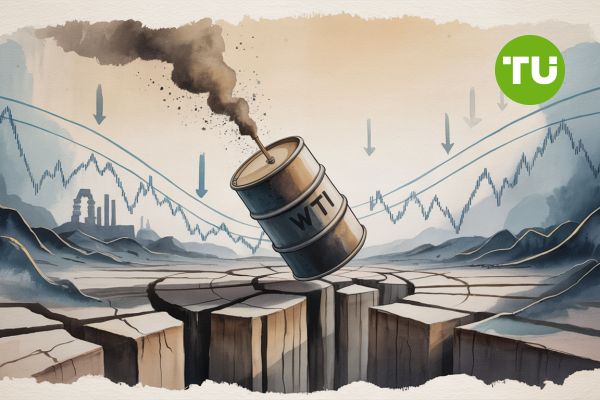WTI crude oil price rises above $73 as Middle East tensions keep risk premium elevated
 WTI crude oil holds above $73 as market eyes risk premium from Iran-Israel conflict
WTI crude oil holds above $73 as market eyes risk premium from Iran-Israel conflict
WTI crude oil prices climbed over 1% on Tuesday, briefly rising above $73 per barrel amid heightened geopolitical concerns following renewed Israeli airstrikes on Iran’s capital. The strikes included attacks on key media buildings and came after U.S. President Donald Trump urged the evacuation of Tehran.
Key Highlights
- WTI crude oil rebounds over 1% to trade above $73 as Israel–Iran conflict intensifies.
- Geopolitical tensions in the Strait of Hormuz and OPEC+ policy moves add to market volatility.
- IEA revises oil demand lower while raising supply forecast, capping upside momentum.
WTI crude oil prices climbed over 1% on Tuesday, briefly rising above $73 per barrel amid heightened geopolitical concerns following renewed Israeli airstrikes on Iran’s capital. The strikes included attacks on key media buildings and came after U.S. President Donald Trump urged the evacuation of Tehran. Although Iran signaled interest in de-escalation and potential nuclear negotiations, the market remained on edge. Monday’s session saw extreme price volatility, with crude swinging within an $8 range before settling lower, as traders digested shifting headlines.

USOIL price dynamics (Source: TradingView)
While there has been no reported disruption to physical oil flows, fears of conflict around the Strait of Hormuz remain elevated. Roughly 19 million barrels per day of crude and refined products transit through this strategic chokepoint. Market participants also reacted to reports of electronic warfare and a nearby ship collision, though analysts continue to downplay the probability of a full closure, citing Iran’s economic reliance on oil exports.
OPEC+ dynamics and macroeconomic crosscurrents
The geopolitical risk premium is being weighed against softer fundamentals. The International Energy Agency lowered its global oil demand forecast by 20,000 barrels per day and simultaneously increased its supply outlook by 200,000 barrels per day. This suggests that barring a material disruption, inventory builds could resume in the near term. Meanwhile, additional pressure on oil could emerge from the Federal Reserve’s upcoming interest rate decision, with stronger dollar expectations potentially capping crude’s upside.
Still, short-term price action remains technically bullish, with WTI holding above its key moving averages. A confirmed breakout above $76.57 remains necessary for continuation to the next leg higher, though traders remain cautious in the absence of a clear catalyst.
In earlier coverage, we highlighted that WTI crude oil was consolidating between $67 and $72 amid a tug-of-war between supply concerns and slowing demand. The latest rally reinforces the role of geopolitical headlines in temporarily overriding weak fundamentals. Until either a breakout or a fresh supply disruption materializes, range-bound conditions are expected to persist.













































































































































